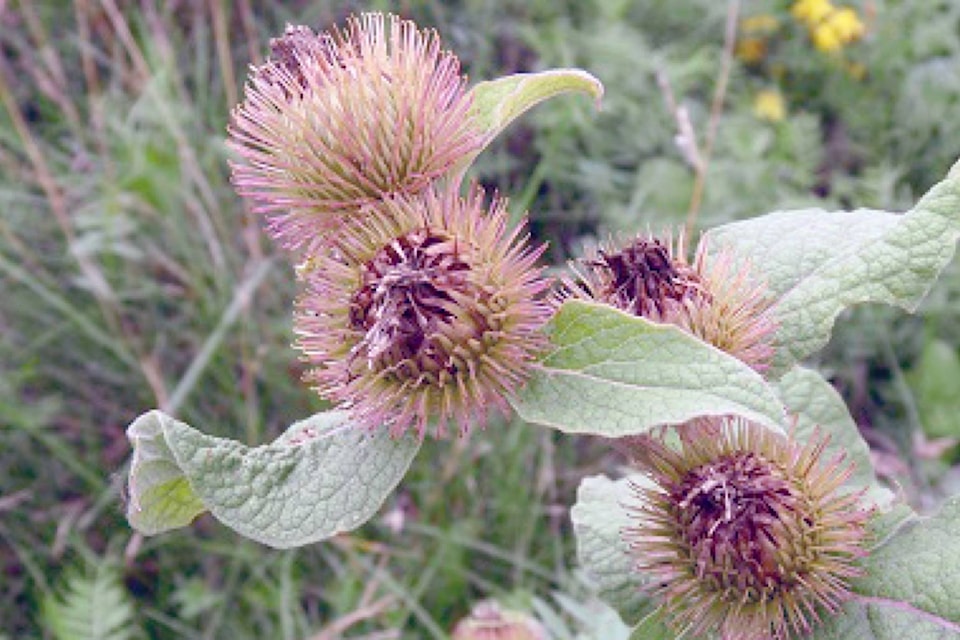Ah, springtime. Everyone loves a beautiful yard with blooming flowers and tiny birds fluttering through the air.
Wait. What is that strange plant staring you down from across your lawn? Don’t be deceived by its’ pretty purple flowers sitting atop a ball of prickly bracts and broad heart-shaped leaves for there is no love in this plant.
You are familiar with this plant in fall when the bracts have dried and come off easily on your clothes as you walk past. This is the common burdock: clinger of clothes, a tangler of fur, and killer of tiny, helpless animals. It can grow up to two metres tall and with its large leaves can shade out other plants.
Burdock is a hardy plant that prefers to grow in disturbed soils but can live happily almost anywhere. It was introduced intentionally or accidentally to Canada from Europe in the 1700s and now its distribution is pretty much worldwide.
Around the world, many cultures have found ways to use the plant for food and drink. The plant also has medicinal properties, the root can be added cooked or raw to any meal you choose for its’ detoxifying qualities. Humans have also copied the hook system of burdocks’ bracts as an inspiration for Velcro.
As inconvenient as it is for the burrs to be sticking to our clothes and hair, it can be a fatal trap for small animals, such as birds and bats, which get tangled in this sticky situation. These animals are not strong enough to free themselves from the clusters of seed heads. Like a fly stuck in a sticky trap, the more they struggle, the more stuck they become.
Not only do these sticky traps affect small animals but they can also be harmful to livestock. The burs get tangled in manes and tails of horses and cows, and can also de-value the wool of sheep. Heavily burred animals become stressed and can experience nose, eyes, and mouth injuries which reduce the market value and comfort of the animal.
Burdock is considered an invasive plant because of its vigorous nature and easily outcompetes native species.
The wide leaves shade out other pants, eliminating the competition. A high reproductive rate and a very successful method of seed dispersal results in the ultimate invasive weed.
Manual removal of the burdock is possible but very difficult because of their deep taproot. Alternatively, you can prevent the spread of this invasive weed by cutting off the seed heads by mowing, tilling, or just giving the stem a snip before.
The flowers sitting on top of the prickly ball of bracts bloom throughout June to October, so that is the time of year to get those scissors out.
Burdock has been with us for so long, we’ve come to accept it as part of our ecosystem. However, ignoring the infestation of burdock will not make it go away on its own.
To prevent further spread, more education on invasive weeds can help future generations to properly manage this invasive plant.
For more information check out bcinvasives.ca or contact your local Kootenay Invasive Species Society at ckiss.ca. We can slow the spread of this plant and give native species and small animals a better chance to survive in your happy spring garden.
Carley Dolman and Candice Wright are second-year Recreation, Fish and Wildlife students at Castlegar’s Selkirk College.

